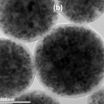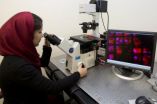(Press-News.org) COLUMBIA, Mo. -- For some parents, the decision of when to enroll their children into kindergarten can result in costly consequences such as another year of daycare expenses. In general, children must be five years old to be eligible to be enrolled in kindergarten. However, the developmental differences between a young kindergartener who barely qualifies for the state-mandated age cutoff date compared to a child who is almost year older, may have implications. Now, a University of Missouri researcher has found that the youngest kindergartners are about five times more likely to be retained, or held back, compared to the oldest students, resulting in higher costs for parents and school districts.
"Research on retention has been somewhat more consistent in suggesting that holding children back a year is not the most effective practice," said Francis Huang, assistant professor in the MU College of Education. "Requiring children to repeat a grade is not only expensive for parents and school districts, but it also can affect children's self-esteem and their ability to adjust in the future."
Huang suggests that schools should continue to be more flexible in assisting kindergarteners of varying ages so that they can proceed normally rather than requiring them to repeat the grade the following year.
"The youngest students in a classroom can be nine to 12 months less mature than their oldest peers," Huang said. "Since older kindergarteners can have as much as 20 percent more life experience than their younger classmates, teachers need to meet students where they are developmentally and adjust instructions based on a student's ability. Studies have shown that only a small number of teachers modify classroom instruction to deal with a diverse set of students."
Huang also investigated the relationship between retention and a child's socioemotional skills, such as the child's self-control and interpersonal skills, to further understand why younger students were more likely to be retained. Huang analyzed data from the nationally-representative "Early Childhood Longitudinal Study, Kindergarten Class of 1998-99" and found that, on average, the youngest kindergarteners were about five times more likely to be retained compared to the oldest kindergartners. However, Huang found that children with higher attentiveness, task persistence, and eagerness to learn were less likely to repeat a grade.
In addition, Huang also noticed that a child's height was associated with the likelihood of a child being retained. This relationship existed even after accounting for differences in children's academic abilities, socioeconomic status, age, and fine motor skills.
"Retention is usually reserved for children who struggle academically; however, if two children are having the same difficulties in the classroom and one child happens to be shorter than the other child, then the smaller, younger child has a much higher likelihood of being retained," Huang said.
Since parents, teachers and school administrators may be operating under the assumption that early retention may be beneficial, Huang says awareness of higher retention rates among young students is important to acknowledge in order to address the issue. Huang's study, "Further Understanding Factors Associated with Grade Retention: Birthday Effects and Socioemotional Skills," was published in the Journal of Applied Developmental Psychology.
INFORMATION: END
Youngest kindergarteners most likely to be held back, MU study finds
MU researcher says teachers need to adapt instruction based on the maturity and ability of all students
2014-03-04
ELSE PRESS RELEASES FROM THIS DATE:
UC research tests which nano system works best in killing cancer cells
2014-03-04
In current research related to improving cancer treatments, one promising area of research is the effort to find ways to selectively pinpoint and target cancer cells while minimizing effects on healthy cells.
In that effort, it's already been found in lab experiments that iron-oxide nanoparticles, when heated and then applied specifically to cancer cells, can kill those cells because cancer cells are particularly susceptible to changes in temperature. Increasing the temperature of cancer cells to over 43 degrees Celsius (about 109 degrees Fahrenheit) for a sufficient ...
The chemistry (and fascinating history) of pepper, the spice that changed the world
2014-03-04
WASHINGTON, March 3, 2014 — Pepper is one of the most plentiful condiments in the world today, but it used to be more valuable than gold. In the American Chemical Society's (ACS') latest Reactions video, we examine how pepper's delectable chemistry made it a key player in the global spice trade. The sought-after spice helped usher in the "Age of Discovery," which bridged the gap between the Middle Ages and the Modern era. And because we're celebrating our second month of existence, it's a Reactions double feature this week. In our second video, we examine the science behind ...
Team models photosynthesis and finds room for improvement
2014-03-04
CHAMPAIGN, Ill. — Teaching crop plants to concentrate carbon dioxide in their leaves could increase photosynthetic efficiency by 60 percent and yields by as much as 40 percent, researchers report in a new study.
The team used a computer model to simulate how adding genes from a type of photosynthetic algae known as cyanobacteria might influence photosynthetic efficiency in plants. Cyanobacteria contain small structures, called carboxysomes, which concentrate carbon dioxide at the site of photosynthesis.
"Photosynthesis is the most studied of all plant processes, so ...
Scientists identify protein linked to most common movement disorder
2014-03-04
Quebec City, March 3rd, 2014—A team of researchers from Université Laval and CHU de Québec identified unusually high levels of a certain protein in the brains of people suffering from essential tremor (ET), a movement disorder that affects 4% of the adult population. The discovery, the details of which were published in the most recent edition of the journal Movement Disorders, could lead to an effective treatment for this neurological condition, which is 10 times more prevalent than Parkinson's disease.
As its name suggests, ET causes tremors in various parts of the ...
UC research tests range of electrical frequencies that help heal chronic wounds
2014-03-04
Naturally occurring electricity in our cells is key to how our bodies function, and that includes the healing of wounds.
And externally applied low-amplitude electric fields have been shown to help hard-to-heal chronic wounds, like those associated with diabetes, where there is insufficient blood supply and drug treatments are not effective. The externally applied electric field manipulates the body's naturally occurring electricity, such that the new vessels are formed, and blood supply to the wound is increased.
University of Cincinnati physics and biomedical engineering ...
Cigarette smoking may cause physical changes in brains of young smokers, UCLA study shows
2014-03-04
The young, it turns out, smoke more than any other age group in America. Unfortunately, the period of life ranging from late adolescence to early adulthood is also a time when the brain is still developing.
Now, a small study from UCLA suggests a disturbing effect: Young adult smokers may experience changes in the structures of their brains due to cigarette smoking, dependence and craving. Even worse, these changes can occur in those who have been smoking for relatively short time. Finally, the study suggests that neurobiological changes that may result from smoking ...
Pitt public health analysis provides guidance on hospital community benefit programs
2014-03-04
PITTSBURGH, March 3, 2014 – A new analysis led by the University of Pittsburgh Graduate School of Public Health offers insights for nonprofit hospitals in implementing community health improvement programs.
In a special issue of the Journal of Health Care for the Poor and Underserved that focuses on the Affordable Care Act (ACA), a multidisciplinary team of Pitt researchers explore published research on existing community benefit programs at U.S. hospitals and explain how rigorous implementation of such programs could help hospitals both meet federal requirements and ...
New study reveals insights on plate tectonics, the forces behind earthquakes, volcanoes
2014-03-04
The Earth's outer layer is made up of a series of moving, interacting plates whose motion at the surface generates earthquakes, creates volcanoes and builds mountains. Geoscientists have long sought to understand the plates' fundamental properties and the mechanisms that cause them to move and drift, and the questions have become the subjects of lively debate.
A study published online Feb. 27 by the journal Science is a significant step toward answering those questions.
Researchers led by Caroline Beghein, assistant professor of earth, planetary and space sciences ...
Novel drug treatment protects primates from deadly Marburg virus
2014-03-04
For the first time, scientists have demonstrated the effectiveness of a small-molecule drug in protecting nonhuman primates from the lethal Marburg virus. Their work, published online in the journal Nature, is the result of a continuing collaboration between Army scientists and industry partners that also shows promise for treating a broad range of other viral diseases.
According to senior author Sina Bavari, the drug, known as BCX4430, protected cynomolgous macaques from Marburg virus infection when administered by injection as long as 48 hours post-infection. Bavari ...
Manufacturing a solution to planet-clogging plastics
2014-03-04
Researchers at Harvard's Wyss Institute have developed a method to carry out large-scale manufacturing of everyday objects – from cell phones to food containers and toys – using a fully degradable bioplastic isolated from shrimp shells. The objects exhibit many of the same properties as those created with synthetic plastics, but without the environmental threat. It also trumps most bioplastics on the market today in posing absolutely no threat to trees or competition with the food supply. The advance was reported online last week in Macromolecular Materials & Engineering. ...
LAST 30 PRESS RELEASES:
New prostate cancer trial seeks to reduce toxicity without sacrificing efficacy
Geometry shapes life
A CRISPR screen reveals many previously unrecognized genes required for brain development and a new neurodevelopmental disorder
Hot flush treatment has anti-breast cancer activity, study finds
Securing AI systems against growing cybersecurity threats
Longest observation of an active solar region
Why nail-biting, procrastination and other self-sabotaging behaviors are rooted in survival instincts
Regional variations in mechanical properties of porcine leptomeninges
Artificial empathy in therapy and healthcare: advancements in interpersonal interaction technologies
Why some brains switch gears more efficiently than others
UVA’s Jundong Li wins ICDM’S 2025 Tao Li Award for data mining, machine learning
UVA’s low-power, high-performance computer power player Mircea Stan earns National Academy of Inventors fellowship
Not playing by the rules: USU researcher explores filamentous algae dynamics in rivers
Do our body clocks influence our risk of dementia?
Anthropologists offer new evidence of bipedalism in long-debated fossil discovery
Safer receipt paper from wood
Dosage-sensitive genes suggest no whole-genome duplications in ancestral angiosperm
First ancient human herpesvirus genomes document their deep history with humans
Why Some Bacteria Survive Antibiotics and How to Stop Them - New study reveals that bacteria can survive antibiotic treatment through two fundamentally different “shutdown modes”
UCLA study links scar healing to dangerous placenta condition
CHANGE-seq-BE finds off-target changes in the genome from base editors
The Journal of Nuclear Medicine Ahead-of-Print Tip Sheet: January 2, 2026
Delayed or absent first dose of measles, mumps, and rubella vaccination
Trends in US preterm birth rates by household income and race and ethnicity
Study identifies potential biomarker linked to progression and brain inflammation in multiple sclerosis
Many mothers in Norway do not show up for postnatal check-ups
Researchers want to find out why quick clay is so unstable
Superradiant spins show teamwork at the quantum scale
Cleveland Clinic Research links tumor bacteria to immunotherapy resistance in head and neck cancer
First Editorial of 2026: Resisting AI slop
[Press-News.org] Youngest kindergarteners most likely to be held back, MU study findsMU researcher says teachers need to adapt instruction based on the maturity and ability of all students





